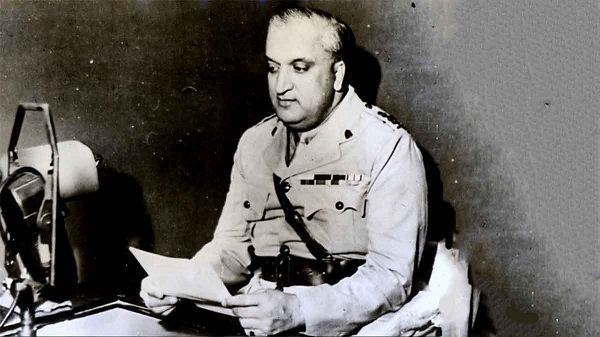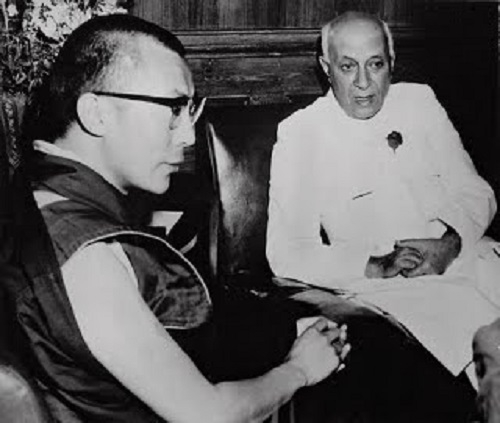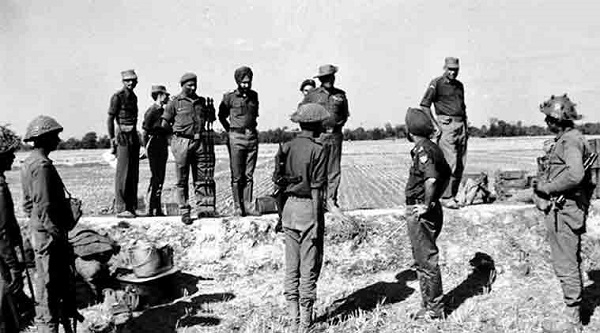Three Myths of Modern Indian History
10 Mar 2021 18:12:05
When conjectures, prejudices and assumptions combine together in a historical setting, myths are born. Historical myths are deliberately perpetuated by partisan historians to justify certain events and actions. When repeated continually, myths get accepted as historical realities. Three common myths of modern Indian history are discussed below to correct common misconceptions.
Myth 1: Grant of special status and offer of plebiscite to Kashmir were historical compulsions
Despite having signed the Standstill Agreement, Pakistan invaded the state of Jammu and Kashmir on 22 October 1947, catching both the vacillating Maharaja and the Government of India off guard. The attackers made rapid progress and were soon on the outskirts of Srinagar. The state witnessed destruction of life and property of unprecedented proportions.

Unable to stop the ruthless marauders, the Maharaja beseeched Indian help. He offered to sign an Instrument of Accession to India vide his letter dated 26 October 1947 and sought its military assistance. Sensing gravity of the situation, Government of India accepted the Instrument of Accession on the very next day (27 October 1947) and commenced military assistance soon thereafter.
The Instrument of Accession as offered by the Maharaja had an inbuilt option to reject the Indian constitution. Clause 7 read – “Nothing in this Instrument shall be deemed to commit me in any way to acceptance of any future constitution of India or to fetter my discretion to enter into agreements with the Government of India under any such future constitution.” Once the situation stabilized, the J&K Constituent Assembly changed its stand. Quoting the above clause, Kashmir refused to accept draft Indian constitution circulated in November 1949. It demanded and got special status through Article 370.
It is incomprehensible as to why India let the Maharaja impose such conditions in his letter of offer for accession. He was on his knees. The population and public sentiment were totally anti-Pakistan. All the major political parties of Kashmir were also in favour of joining the Indian Dominion. It was a golden opportunity for India to demand an unconditional accession/merger.
Worse, while accepting the Instrument of Accession, Lord Mountbatten, the then Governor General of Independent India, in an accompanying letter to the Maharaja of the same date (27 October 1947) stated, “It is my Government's wish that, as soon as law and order have been restored in Kashmir and her soil cleared of the invader, the question of the State's accession should be settled by a reference to the people.” It was a totally unconstitutional and unwarranted offer. Plebiscite has become a millstone around India’s neck.
Article 370 was seen as the root cause of the separatist psyche. It kept reminding Kashmiri men and women that they are a special lot and different than other Indians. Even after a gap of over sixty years, Omar Abdullah had the audacity to declare on the floor of the state assembly that Kashmir had not ‘merged’ with India in 1947 but ‘acceded’ to it and that Kashmir was an issue between two neighbours.
As seen above, it is a myth that India was forced to grant special status to Kashmir or offer plebiscite due to the force of circumstances. It was an act of gross omission by short-sighted Indian leadership.
Myth 2: Recognition of Chinese sovereignty over Tibet was inevitable
Although China claims that Tibet had been under its rule since the period of Yuan Dynasty (1271-1368), the International Commission of Jurists (ICJ) contests such claims. ICJ is of the view that during the period 1913-1950, Tibet conducted its own domestic and foreign affairs free from any outside authority, thereby demonstrating the conditions of statehood as generally accepted under international law.

After emerging victorious in the civil war, the People's Liberation Army entered Tibet in 1950. By early 1951, it had established its control over the entire country. Subsequently on 23 May 1951, the local Tibetan Government was coerced to sign the Seventeen-Point Agreement and ‘peaceful liberation of Tibet’ was declared to be complete. As the rebellion of Eastern Kham and Amdo engulfed the whole country, Chinese authorities crushed it ruthlessly in 1959, forcing the Dalai Lama to flee to India.
In 1950, sensing threat from expansionist China, Tibet sought recognition of its independent status from the world community. Unfortunately, the Indian leadership failed to appreciate the strategic need to have an independent Tibet as a buffer between India and China. It toed the Chinese line and went to the extent of downplaying the importance of the Simla Convention. Further, India advised the Tibetan delegation in April 1951 to admit that Tibet was a part of China. India thus became instrumental in letting China fortify its claim over hapless Tibet in the comity of nations.
Understandably, India was in no position to ensure Tibet’s independence – but it did not have to support the Chinese claims unequivocally. A policy of deliberate and calculated ambiguity and vacillation would have served the Indian interests best. India should have followed a policy of continual ambivalence forcing China to remain sensitive to Indian concerns as well. Whereas we have frittered away the Tibet card, China continues to question Indian stand on Kashmir.
Myth 3: Liberation of Bangla Desh was a strategic masterstroke
It is often claimed that liberation of Bangla Desh in 1971 was a strategic and diplomatic masterstroke of unprecedented proportions. It was certainly an exceptional military victory but India failed to make it a strategic achievement. Erstwhile East Pakistan was an albatross around the neck of the ‘moth-eaten Pakistan’. Being more populous with a smaller area to sustain it, most West Pakistanis considered East Pakistan to be a liability. Further, with the vast Indian sub-continent separating the two parts, defence of the country became a huge challenge. A Pakistani General publically called East Pakistan ‘a cancerous growth in Pakistan’s body politic’.

Due to language differences, linkages through religion proved highly tenuous. Internal dissentions and strife became so strong that millions of East Pakistanis sought refuge in India to escape persecution at the hands of West Pakistani military and their henchmen. Indian political leadership considered it to be a golden opportunity to cut Pakistan to size by helping creation of an independent Bangla Desh. It was based on two assumptions – one, a grateful Bangla Desh would always be a friendly nation, and two, a shrunk Pakistan would cease to be a bothersome adversary.
India was soon to realise its folly and naivety in expecting gratitude from Bangla Desh. Within a few years, Bangla Desh, especially under Prime Minister Khaleda Zia, forgot all Indian help and sacrifices. They also forgot the loot, plunder, rapes and atrocities committed on them by the West Pakistani forces. “Imagine the degree of ingratitude – some politicians in Bangla Desh are colluding with Pakistan’s ISI to provide sanctuaries to ultras fighting India, the country to whom it owes its very existence,” remarked a veteran soldier.
As regards Pakistan, once the memories of ignominies of defeat slid into the background, many Pakistani writers appeared relieved at the ridding of the bondage of East Pakistan. Inadvertently, India had done a huge favour to them. Many experts are of the view that India should have let Pakistan suffer and bleed as reconciliation between the two wings of Pakistan could never have been possible. Today, Pakistan is a more compact and defendable country.
On the other hand, with a friendly government in power in newly independent Bangla Desh, India failed to utilise the opportunity to settle all irksome border issues and reduce the vulnerability of the sensitive Siliguri corridor. Thus, despite an unprecedented military victory, India made no concrete strategic gains.
.
.